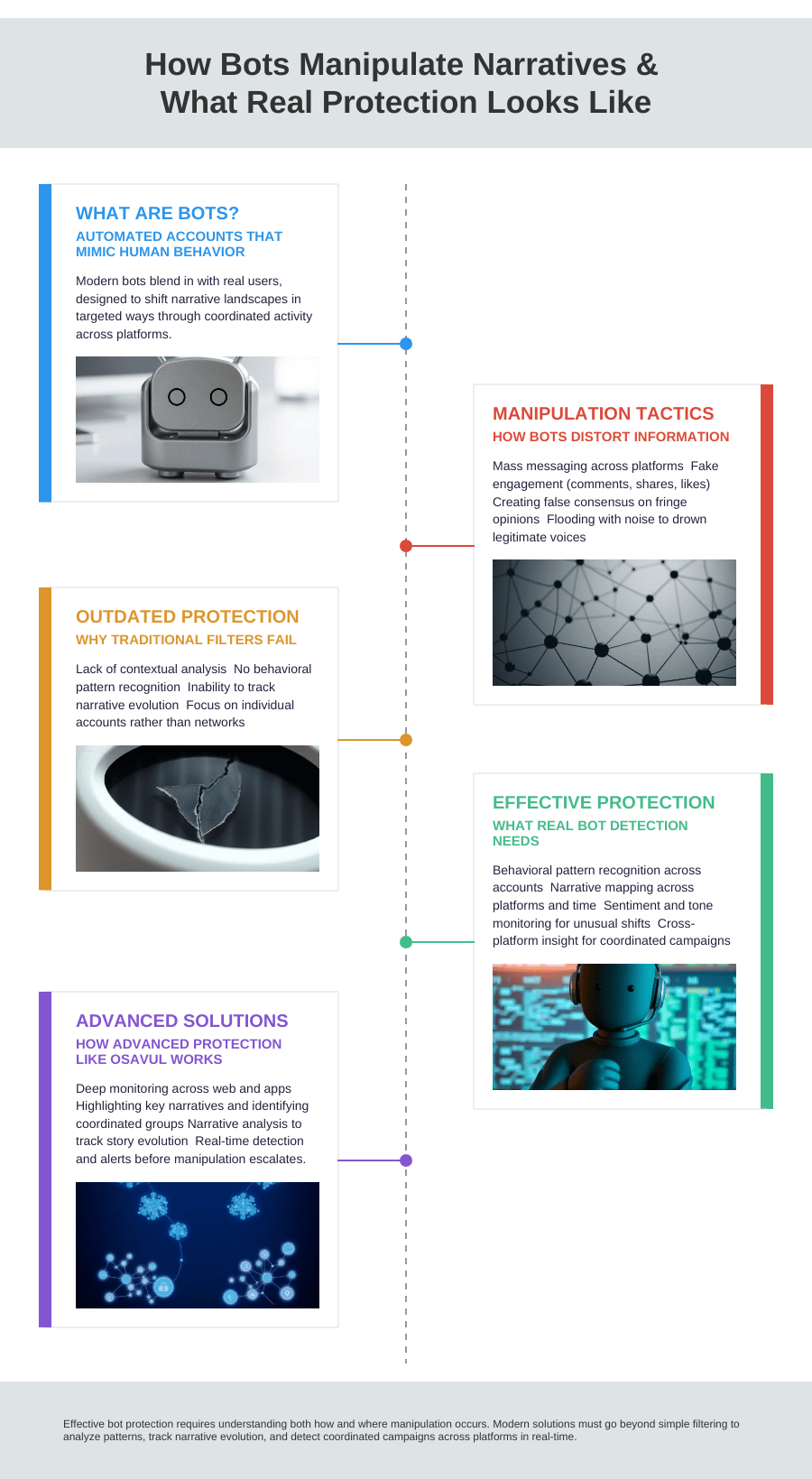One of the most frustrating aspects of the modern digital world is that bots are no longer just background noise. Rather than filling a feed with spam links, bots have not developed into online entities that can engage, respond, and interact in a seemingly human way. The goal behind this is not to simply annoy or advertise, but instead to shape conversation by amplifying chosen viewpoints and making fringe opinions appear to be more widespread than they actually are.A degree of this manipulation is about volume, but it is also about coordination and intent. Being able to recognize this activity requires a new, more sophisticated take on bot detection software, one that doesn’t just block it but also understands the behavior on a deeper level.

The most dangerous aspect of bot activity is its subtlety. Bots are designed to be able to blend in and operate in ways that replicate real human user behavior, all the while working to shift a narrative landscape in targeted ways.
What is a bot? The answer is multifaceted. Some of the key ways that bots can distort the digital public sphere include:
Repeating an identical message across multiple different platforms, websites, and accounts to embed it within the public consciousness.
Creating comments, shares, and likes from automated accounts to achieve an artificial boost of visibility.
Giving the impression that a particular point of view is more common and popular that it really is, through the coordination of thousands of bots expressing the same opinion.
Flooding a particular hashtag or chosen comment sections with off-topic content that succeeds in overwhelming and drowning out legitimate voices.
These examples of manipulation can happen very quickly, often before human moderators notice. As soon as the false narrative is spread, the damage is hard to reverse.

Traditional filters tend to focus on more individual red flags like repetitive links, suspicious usernames and glaringly unusual activity. While this activity is prime for catching basic spam, it can miss the larger story at play. The truth is that in the modern landscape, bots don’t look like bots anymore.
Some of the outdated systems fail due to the following:
Old systems are not able to analyze how messages might align with one another when they are spread over time.
Sophisticated modern bots are apt to mimic human actions on realistic timelines, encompassing liking, waiting for appropriate times, and commenting.
Without the capability to track how messages cluster and evolve together, it is virtually impossible to uncover the full scale of the manipulation occurring.
Rather than catching a fully coordinated bot network, older systems might only catch the most obvious offenders, allowing more sophisticated campaigns to continue under the radar. It’s in situations like this where advanced bot protection becomes absolutely critical.
More than simple traffic filtering is needed when it comes to countering narrative-driven manipulation. The most effective human bot protection comes through identifying abnormal patterns, not just flagging and blocking the most suspicious IPs.
The best bot detection tools offer:
Tracking when accounts post, and how they post. Alongside identifying any account clusters that then follow suit.
Analyzing and mapping how ideas are spread across the likes of mobile apps, search engines, and other platforms over a period of time.
Flagging any sudden shifts in tone that could be indicative of a coordinated sentiment push.
An understanding that coordinated campaigns very rarely remain in a single place in the digital environment.
For organizations, having access to dashboard reports that provide a full picture view is invaluable. Developed insights are far more helpful than simple alerts.
When it comes to top-rate bot protection service providers, Osavul is very much at the forefront. In part for its ability to react quickly, and in part because it can also understand why and how the flagged behaviors are occurring.
Some of the crucial ways that Osavul delivers true human bot protection include:
Bots do not exist in a single platform bubble, and Osavul can track behaviors across a wide range of mobile apps, websites, and more.
Rather than focusing on any single isolated accounts, Osavul can identify and track groups of bots that are acting in a coordinated manner.
Osavul’s software not only sees what is being said, but also tracks how the stories are spreading and evolving.
Osavul has the power to flag manipulation before it is able to escalate, assisting teams in acting while narratives are still in their formative stage.
The combination of these factors aids better security and provides a detailed explanation of how and where manipulation is occurring.

Ultimately, bots can no longer be seen as simple technical nuisances, but active participants in a growing battle over public influence and opinion. They are becoming more and more adept at pushing agendas, manipulating tone, and overwhelming real debate in the online space.
Real human bot protection has moved beyond simply blocking individual accounts, and a tool suite like Osavul is now essential for providing the visibility and insight needed to effectively counter such campaigns. It is more than traditional bot protection; it is the best way to safeguard against the much more sophisticated methods of modern digital interference.